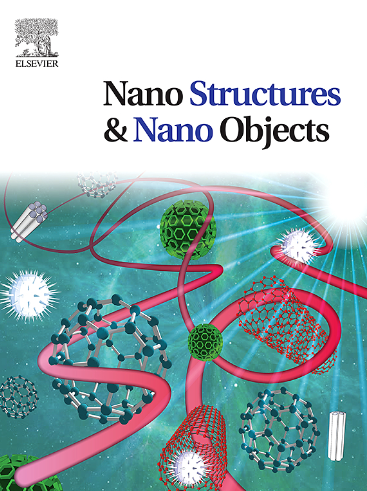Palladium nanoparticles: Potential for receptor-mediated chemotherapeutic drug delivery to cervical cancer cells
IF 5.45
Q1 Physics and Astronomy
引用次数: 0
Abstract
Novel therapeutic strategies are needed to mitigate the hurdles faced by traditional cancer therapy that involves surgery, chemotherapy, and radiotherapy. The advent of nanomedicine has led to the production of an array of nanomaterials for therapeutic delivery. Nanoparticles (NPs) are potential anticancer delivery systems due to their favorable physical and chemical characteristics. Palladium NPs (PdNPs) are easy to synthesize, stable, have low cytotoxicity and good biocompatibility, and can be modified for use in biomedicine. PdNPs were synthesized chemically and modified with the biopolymer chitosan and the targeting ligand transferrin (Tf). This was used to encapsulate the anticancer drugs doxorubicin (DOX) and 5-fluorouracil (5-FU) individually and as a dual-drug formulation. PdNPs were spherical, small (98.9 nm), and had good colloidal stability (zeta potential = −22.3 mV). High drug encapsulation efficiency (>70 %) was noted for both drugs, with a sustained release profile for the Tf-modified PdNPs at low pH for both drug formulations over 72 h. These PdNPs were targeted to a cervical cancer cell model (HeLa) that highly expresses the Tf receptor. Cytotoxicity was assessed on the human embryonic kidney (HEK293), breast adenocarcinoma (MCF-7), and HeLa cell lines. The anticancer activity confirmed the targeting specificity of the Tf-containing nanocomplexes to the HeLa cells, with good cell viability in the non-cancer (HEK293) cells. Tf-targeted nanocomplexes containing the dual-drug generated better anticancer activity than their non-targeted counterparts, confirming their potential as targeted therapeutic delivery vehicles that warrant further investigation.
求助全文
约1分钟内获得全文
求助全文
来源期刊

Nano-Structures & Nano-Objects
Physics and Astronomy-Condensed Matter Physics
CiteScore
9.20
自引率
0.00%
发文量
60
审稿时长
22 days
期刊介绍:
Nano-Structures & Nano-Objects is a new journal devoted to all aspects of the synthesis and the properties of this new flourishing domain. The journal is devoted to novel architectures at the nano-level with an emphasis on new synthesis and characterization methods. The journal is focused on the objects rather than on their applications. However, the research for new applications of original nano-structures & nano-objects in various fields such as nano-electronics, energy conversion, catalysis, drug delivery and nano-medicine is also welcome. The scope of Nano-Structures & Nano-Objects involves: -Metal and alloy nanoparticles with complex nanostructures such as shape control, core-shell and dumbells -Oxide nanoparticles and nanostructures, with complex oxide/metal, oxide/surface and oxide /organic interfaces -Inorganic semi-conducting nanoparticles (quantum dots) with an emphasis on new phases, structures, shapes and complexity -Nanostructures involving molecular inorganic species such as nanoparticles of coordination compounds, molecular magnets, spin transition nanoparticles etc. or organic nano-objects, in particular for molecular electronics -Nanostructured materials such as nano-MOFs and nano-zeolites -Hetero-junctions between molecules and nano-objects, between different nano-objects & nanostructures or between nano-objects & nanostructures and surfaces -Methods of characterization specific of the nano size or adapted for the nano size such as X-ray and neutron scattering, light scattering, NMR, Raman, Plasmonics, near field microscopies, various TEM and SEM techniques, magnetic studies, etc .
 求助内容:
求助内容: 应助结果提醒方式:
应助结果提醒方式:


